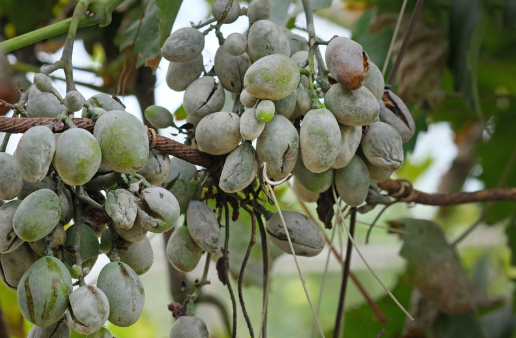
Professional cultivators and home gardeners struggle with a common problem: powdery mildew. Chances are that growers of wine grapes, hops, and cannabis would likely recognize the white powdery substance and the headache that comes with it, but may still be asking:
- What is powdery mildew?;
- What are its causes and effects?; and
- What is the best powdery mildew treatment?
Here's what you need to know about powdery mildew.
What is powdery mildew?
Powdery mildew is a fungal infection that affects a wide variety of crops. It presents as white powdery spots that first appear on the lower leaves of the plant, but advanced infections can cover flowers and fruit as well.
Multiple species of fungus cause powdery mildew. These species are obligate parasites, which means they need living plant hosts to spread. The fungal spores germinate on a plant’s surface, and then grow thread-like haustoria to penetrate the plant cells and extract key nutrients.
What are the causes and effects of powdery mildew?
Powdery mildew spores are likely to find their way into any grow via air currents, but whether they develop depends on plant health and environmental conditions.
Spores are most easily dispersed during 70⁰- 80⁰F days with relative humidity levels of 40%-70%, while cool nights ranging from 60⁰-70⁰F and relative humidity levels of 90%-99% are most conducive to spore growth. Though spores are airborne, poor ventilation makes infection more likely.
Because powdery mildew saps essential nutrients, the infected leaves often wither and malfunction. This inhibits photosynthesis and the ability to create compounds that keep plants healthy and make them attractive to humans.
Darrin Potter, Terra Vera's horticulture advisor and experienced grower, says, "Powdery Mildew is one of the last things a cannabis cultivator wants to find in their grow. Even if you treat it at once, it can very quickly get out of hand and lead to the destruction of months worth hard work. Even if you attempt to remediate the product in some way for extraction purposes, a powdery mildew infection will result in lower biomass yield and cannabinoid concentration. I would not recommend using contaminated products for processing due to concerns of potential contaminating the processing facility and equipment."
What are common treatments?
Growers often use hydrogen peroxide and potassium bicarbonate foliar sprays or ozone to fight powdery mildew on plants, but these methods are risky. They are often ineffective and may be harmful to human health. Hydrogen peroxide for example inhibits spores from forming, but will leave germinated spores intact to do further damage. Ozone, on the other hand, leaves behind a carcinogenic residue.
Grow Smart from the Start
Using Terra Vera's IV nutrients from start to finish increases your plant's ability to fight off environmental stress so that yield potential and quality are preserved. It can be sprayed on cannabis plants even through the late stages of flower and post-harvest, making it a versatile nutrient for even the most sensitive genetics.
Already have an outbreak? Use GRDN to get rid of plant diseases safely.
The best part? You can generate Terra Vera solutions onsite with our systems so that you can rest easy knowing your plants are getting fed the freshest ingredients each time.